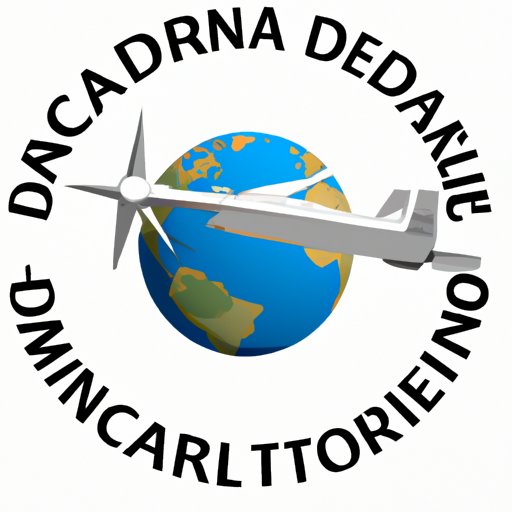Introduction
North American Aerospace Defense Command (NORAD) is a crucial part of the national defense for the United States and Canada. NORAD’s mission is to prevent air attacks, ensure the sovereignty of North American airspace, and provide aerospace warning. In short, NORAD serves as a powerful defender against potential aerospace and security threats.
This article aims to provide a comprehensive overview of NORAD, including its history, structure, roles and responsibilities, and how it helps protect North America from potential threats.
Discovering NORAD: Understanding Its Vital Role in North American Defense
NORAD stands for North American Aerospace Defense Command. It is a joint military organization between the United States and Canada. Established in 1958, the command center is located in Colorado Springs, CO.
NORAD’s importance for North American defense is due to its early detection and timely response capability. The organization detects potential threats and responds promptly to prevent or mitigate any attack. It provides aerospace warning, air sovereignty, and air defense for North America.
NORAD’s most important tasks and responsibilities include air defense, air sovereignty, surveillance and control, and missile warning. It provides aerospace surveillance over North America to detect potential threats, whether it is aircraft or missiles. When necessary, NORAD deploys forces to intercept and neutralize the threat.
Navigating NORAD: A Comprehensive Guide to the Organization and Its Mission
NORAD’s organizational structure consists of several departments, including the Canadian NORAD Region (CANR) and the Continental United States NORAD Region (CONR). These regions are sub-divided into sectors, with different roles such as air defense, air warning, aerospace control, and maritime warning.
The NORAD commander is responsible for NORAD’s overall mission, and the deputy commander supports him in carrying out the responsibilities and tasks. Besides, joint task forces and NORAD’s liaison officers work closely with the Canadian Armed Forces and the United States Department of Defense to ensure seamless coordination between the two countries.
NORAD also collaborates with other organizations and countries, sharing information and intelligence to ensure North America’s safety and security. For instance, the organization works with the Federal Aviation Administration (FAA) to identify civilian aircraft that may pose a threat to national security.
The History and Evolution of NORAD: An Inside Look at the North American Aerospace Defense Command
NORAD’s history dates back to the Cold War era, where the Soviet Union’s threats prompted Canada and the United States to collaborate on defense. The formation of NORAD was an effort to overcome the negative consequences of a lack of preparedness.
In 1957, Soviet Union launched Sputnik, which raised concerns about the potential dangers of missile attacks. One year later, Canada and the United States signed an agreement forming NORAD. Since then, NORAD has evolved to meet changing security threats and rising technology.
Over the years, NORAD has been involved in various missions, including responding to the 9/11 terrorist attacks, participating in the Gulf War, and collaborating with other nations for international security initiatives.
How NORAD Plays a Critical Role in Protecting North America from Threats
NORAD plays a vital role in protecting North America from potential threats by using advanced technologies and systems designed to detect, track, and alert the military to any airspace threats quickly. The organization employs a suite of defense capabilities, including air defense, missile warning, and aerospace control.
NORAD’s defense capabilities allow it to detect and respond promptly to potential threats. NORAD’s air defense system uses early warning radar, satellites, and other tools to identify any incoming threat. The missile warning system detects any missile launched by a hostile country that may target North America.
Additionally, NORAD works with other defense organizations, such as the North Atlantic Treaty Organization (NATO), the United States Northern Command (USNORTHCOM), and the United States Strategic Command (USSTRATCOM), to protect North America. The organization offers real-time information sharing, coordination, and support to ensure maximum defense readiness.
Breaking down NORAD: What It Is, How It Works, and Why It Matters to National Security
NORAD’s key role in North American defense is to detect, deter, and neutralize any aerial threats to the continent. The organization has developed capabilities, such as air defense, missile warning, and aerospace surveillance, which allows it to carry out its mission promptly.
NORAD’s capabilities are critical for national security, as they help deter any aggression against North America. The organization provides early warning, ensures air sovereignty, and detects and assesses any potential aerospace threat to the homeland.
In conclusion, NORAD is vital for North American security, and its contribution to national defense is undisputed. NORAD ensures air supremacy, air control, and aerospace surveillance, detecting and neutralizing any threat to the homeland. Its capabilities and cross-agency collaboration are critical for national security.
Conclusion
In summary, understanding NORAD is essential for appreciating the organization’s contribution to national defense. NORAD’s mission of ensuring the sovereignty of North American airspace and early detection and response to potential threats is crucial in ensuring the safety and security of North America. The organization’s capabilities and history of evolving to meet changing threats make it an essential part of national security.
